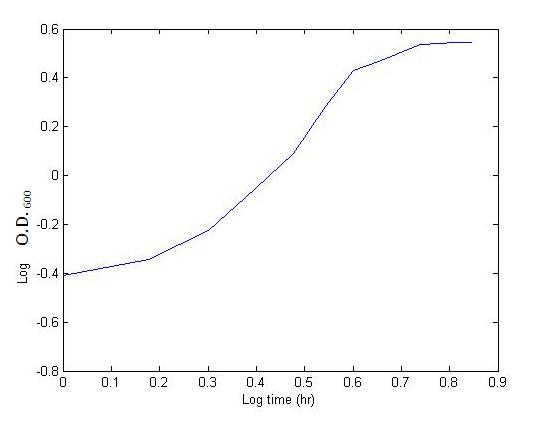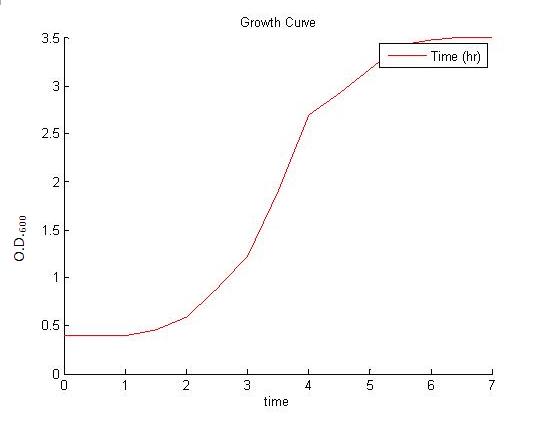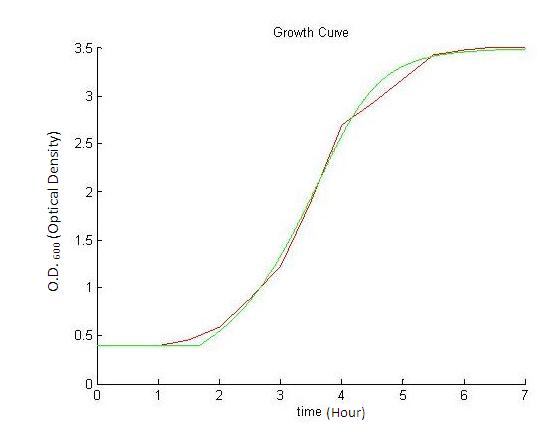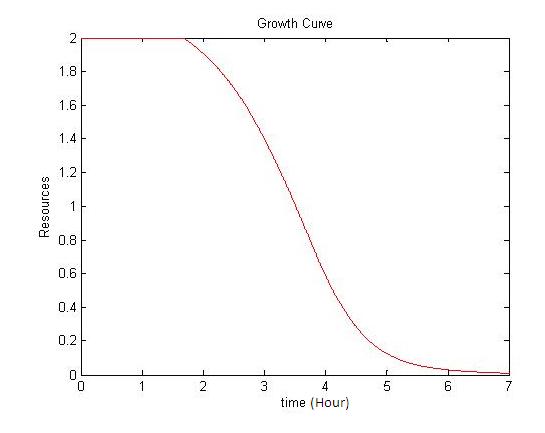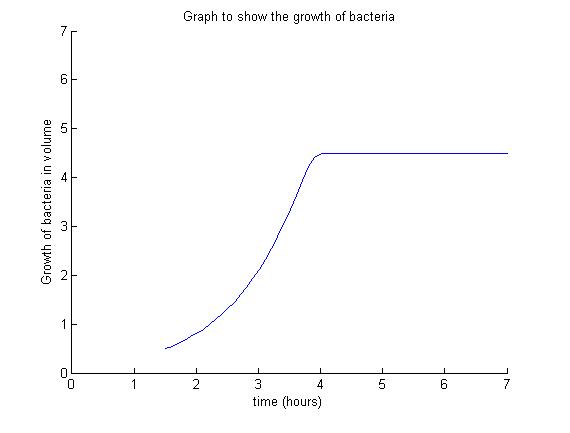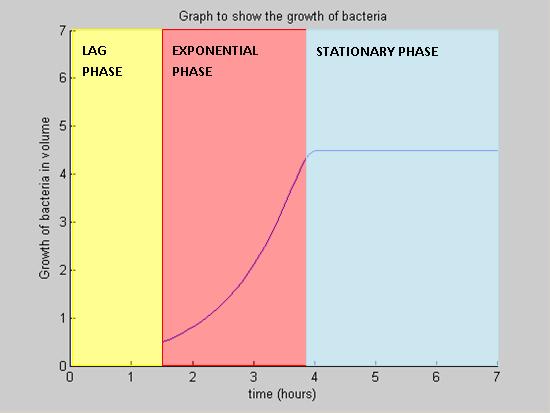Lag Phase
During the lag phase, the rate of growth is slow due to two main reasons, B. subtilis is absorbing nutrients in the medium and the replication machinery is being switched on. The higher the concentration of nutrients in the medium, the faster the rate of bacteria growth.
As a result, the volume of the bacteria increases, followed by an increase in the number of bacteria.
Exponential Phase
Both colony number and cell volume increase exponentially during this phase. Our model assumes concentration of the nutrients inside the bacteria is constant.
Stationary Phase
The growth of the colony ceases in number and in volume due to a finite concentration of nutrients, hence it does not have a gradient. Other causes may be death and cell division.
--Mabult 12:05, 27 October 2008 (UTC) Fine! Now that you have given a little overview of the different pahses of the growth curve it is time to introduce your model
Create a new section for the Model , give the equations,and explain how they relate to the what you have wirtten before
According to the model, the maximum growth of the bacteria is determined by the concentration of nutrients available initially.
To further enhance the accuracy of the model, the following information will be extracted from experimental data:
- Time span of lag phase, stationary phase and exponential phase
- The growth rate
|  "
"

